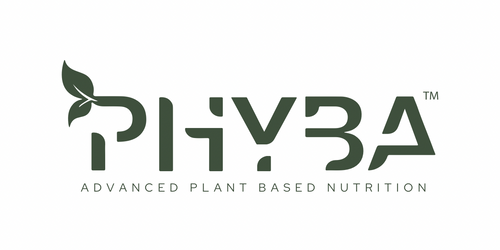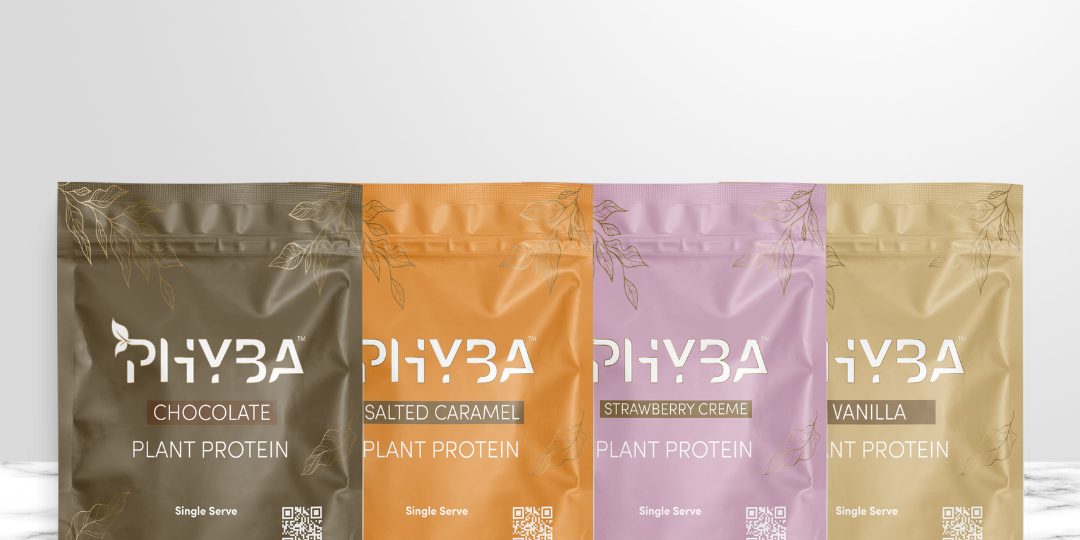Introduction
Athletic performance isn’t just about strong muscles – it also depends on resilient tendons and connective tissues that transmit muscular force. Tendons (which connect muscle to bone) must withstand tremendous loads during sports, storing and releasing energy like springs. If tendons are weak or stiff in the wrong way, athletes risk injury and lose efficiency. Recent research highlights that isometric strength training – exercises where muscles contract without changing length – can specifically bolster tendon health. In this post, we delve into the science of how isometric contractions strengthen tendons and connective tissue. We’ll explore the mechanisms (from collagen synthesis to neural drive), the benefits for the musculoskeletal system, and practical isometric protocols used in training and rehabilitation.
Why Tendon Strength Matters for Athletes
Tendons are composed largely of collagen fibers arranged in parallel, giving them high tensile strengthpmc.ncbi.nlm.nih.gov. Healthy, well-trained tendons can handle greater forces, improve force transfer from muscle to movement, and contribute to explosive power. For example, stiffer tendons can transmit force more quickly and store elastic energy for jumping and sprinting. However, tendon adaptation is slower than muscle adaptation – if muscle strength outpaces tendon strength, injury risk risesgermanjournalsportsmedicine.com. Thus, targeted tendon training is crucial. Strengthening tendons increases their stiffness and resilience, which protects the tendon from overstretching and injury when muscles generate high forcesgermanjournalsportsmedicine.comgermanjournalsportsmedicine.com. For athletes, stronger tendons mean better performance and durability.
Understanding Isometric Strength Training
Isometric exercise involves contracting a muscle without visible movement at the joint. Classic examples include wall sits (holding a squat position), planks, or pressing against an immovable object. Unlike dynamic lifts, isometrics keep the muscle-tendon length constant while generating tension. This unique stimulus has several advantages for connective tissues. Isometrics can be performed at very high intensities safely – an athlete can exert maximal force in a static position without the momentum or technique concerns of moving weights. This makes isometric training effective for targeting neural effort and tendon strain in a controlled manner. Coaches often distinguish yielding isometrics (holding a weight or position statically) from overcoming isometrics (pushing/pulling against an immovable resistance). Both types flood the tendon with mechanical tension, which, as we’ll see, is a key signal for tendon adaptation.
Isometric Contractions and Tendon Adaptation
Regular mechanical loading is the primary way to strengthen tendons. When you contract a muscle isometrically, the attached tendon experiences strain (stretching slightly under tension). Tendon cells (tenocytes) are mechanosensitive – they sense this strain and respond by upregulating proteins that make the tendon stronger. Specifically, isometric loading triggers collagen synthesis in the tendon. Collagen is the main structural protein in tendons, and increasing its production and cross-linking leads to a more robust tissue. In vivo studies have shown that physical training elevates Type I collagen turnover (i.e. increased collagen renewal) in human tendonsscispace.com. In other words, exercise prompts tendon cells to produce new collagen and remodel the tendon’s extracellular matrix. Over time, this can increase the tendon’s cross-sectional area and improve its material properties.
Collagen Synthesis and Tissue Remodeling
On a cellular level, the tension from isometric exercise is transmitted through the tendon’s extracellular matrix to the cell’s cytoskeleton, initiating a cascade of signaling for tissue remodeling. Research indicates that mechanical strain activates genes and growth factors in tendon cells responsible for collagen productiongermanjournalsportsmedicine.com. This means each intense isometric contraction is essentially telling the tendon “lay down more collagen and get stronger.” Notably, the duration of loading appears to matter for collagen responses. A recent animal study compared long, sustained isometric holds to short, repeated dynamic contractions – even when total load time was similar, only the longer isometric holds significantly increased tendon-building factors. In rats with tendon injuries, 30-second isometric holds (4 reps) led to higher expression of tendon collagen (Type I) and the tendon-building protein scleraxis, whereas an equivalent volume of 1-second pulses did nothumanperformancealliance.org. The sustained isometric tension was better at triggering the tendon’s repair and strengthening mechanisms. The authors noted that longer hold times likely “activated the cells within the scarred tendon to stimulate healing” by overcoming the tendon’s stress shieldinghumanperformancealliance.org. For athletes, this suggests that longer isometric contractions can more effectively stimulate collagen synthesis and tendon recovery than very brief efforts.
Tendon Stiffness and Load Adaptation
A key measure of tendon strength is its stiffness – how much it elongates under a given load. Increasing stiffness generally means a tendon can transmit force more efficiently (though too stiff or too compliant can each be problematic; balance is key). Isometric training has been shown to significantly increase tendon stiffness when performed with adequate intensity or duration. In a classic study, Kubo et al. found that 12 weeks of isometric knee extensions increased quadriceps tendon stiffness, but only when using long-duration contractionspubmed.ncbi.nlm.nih.gov. Participants trained one leg with short 1-second isometric pulses and the other leg with 20-second sustained isometric contractions (at ~70% maximal effort). Both protocols had equal total work, and both increased muscle strength similarly – but tendon stiffness only improved in the leg with 20-second holdspubmed.ncbi.nlm.nih.gov. The longer muscle contraction gave the tendon a more prolonged strain stimulus, leading to a greater increase in tendon stiffness compared to short contractionspubmed.ncbi.nlm.nih.gov. This finding suggests that tendons respond not just to load magnitude but also time under tension, adapting their elasticity when exposed to sustained strain.
Over time, regular isometric loading prompts tendons to adapt by adding collagen and cross-links (making the tissue itself stiffer/stronger) and, in longer term, possibly increasing tendon cross-sectional areagermanjournalsportsmedicine.com. These material and structural changes enhance the tendon’s ability to handle high forces without injury. Think of it as “tendon conditioning” – the tendon becomes more spring-like and resilient after consistent isometric training. Such adaptations have direct performance implications: studies link higher tendon stiffness to better jump and sprint performance, as the muscle-tendon unit can transmit forces faster and with less energy lossgermanjournalsportsmedicine.com. Importantly, increasing stiffness is also a protective mechanism. By stiffening, the tendon reduces how much it stretches under a given muscle force, preventing excessive strain that could cause damagegermanjournalsportsmedicine.com. In essence, the tendon’s load-bearing capacity rises to match the muscle’s increased strength, maintaining a safe balance in the muscle-tendon unitgermanjournalsportsmedicine.com.
Neural Drive and Musculoskeletal Coordination
Isometric strength training doesn’t just affect the tendon in isolation – it also induces neural adaptations that benefit the muscle-tendon system. When you perform a maximal isometric contraction, you recruit a high percentage of your muscle fibers and challenge your nervous system to drive the muscle hard without any movement cues. Over time, this leads to improved neural drive, meaning the ability of your central nervous system to activate muscle fibers increases. Studies on resistance training have shown heightened EMG activity and motor unit recruitment after isometric training programs, indicating the neuromuscular system becomes more effective at generating forcepubmed.ncbi.nlm.nih.gov. In practical terms, athletes develop better “connection” between brain and muscle – they can generate force quickly and more fully. This not only boosts strength but also enhances tendon loading. With greater neural drive, muscles can produce higher tension, which in turn places higher purposeful strain on tendons during training, stimulating further adaptation. There’s also evidence that isometric exercise can reduce neural inhibition. In athletes with patellar tendinopathy (jumper’s knee), heavy isometric knee holds yielded an immediate reduction in pain and a release of inhibitory neural signals, effectively allowing the quadriceps to contract harderpubmed.ncbi.nlm.nih.gov. By easing pain and neural guarding, isometrics enabled a higher quality muscle contraction and load on the tendon. Thus, through improving neural drive and reducing pain/inhibition, isometric training helps maximize the muscle-tendon unit’s capacity.
Isometric Training Protocols for Tendon Health and Rehab
How can athletes apply isometric training to build stronger tendons? Research points to a few evidence-backed approaches:
-
Heavy Long Holds: Performing isometric contractions at a high intensity for a sustained duration appears very effective for collagen stimulation and stiffness gains. For example, holding ~70–80% of your maximum effort for 30–45 seconds, for multiple repetitions, is a protocol used in both research and rehab. A case in point: rehab programs for patellar tendon pain often use 5 sets of 45-second isometric leg extensions at about 70–80% of maximum, with ~2 minutes rest, to reduce pain and maintain tendon load tolerance. This approach was shown to produce an immediate analgesic effect in patellar tendinopathy and allowed athletes to then train with less painpubmed.ncbi.nlm.nih.gov. Such long-duration holds can be done with exercises like wall sits (for knee tendons), single-leg calf raise holds (for Achilles tendon), or heavy hang holds (for elbow tendons), depending on the tendon targeted.
-
High-Intensity Short Holds: Interestingly, recent findings suggest that very high-tension but shorter isometrics can also spur tendon adaptation if the strain is great enough. A 2019 review on tendon training recommends a protocol of five sets of four repetitions at ~90% of maximal isometric effort, each rep held for 3 secondsgermanjournalsportsmedicine.com. Despite the brief hold, the intensity (90% MVC) ensures a significant tendon strain with each contraction. Over a training period (e.g. 14 weeks), this paradigm proved effective at increasing tendon stiffness and material strengthgermanjournalsportsmedicine.comgermanjournalsportsmedicine.com. In practice, this might involve pushing or pulling against an immovable object (e.g. isometric mid-thigh pull or isometric bench press hold) with near-maximal effort, 4 reps of 3 seconds, for 5 sets. This approach is relatively time-efficient (~15 minutes per session) and can be integrated into strength training routines to specifically target tendon adaptationgermanjournalsportsmedicine.com.
-
Isometric Pulses vs. Sustained: If doing sport-specific isometric pulses (like short holds), remember the lesson from Kubo’s study – extremely brief contractions may need to be repeated many times or paired with high intensity to impact the tendonpubmed.ncbi.nlm.nih.gov. Simply doing quick muscle squeezes might build muscle strength but do little for tendon stiffness. Aim to accumulate sufficient time under tension at meaningful load levels to signal the tendon to adapt.
In rehabilitation settings, isometric protocols are a cornerstone for tendon injuries. Early-stage tendon rehab often uses isometrics because they can be less painful than moving exercises. Athletes with Achilles or patellar tendinopathy frequently start with daily isometric holds to calm pain and strengthen the tendon before progressing to isotonic (movement) exercises. The isometric phase allows maintaining tendon load without exacerbating injury – for example, a strained Achilles might be managed with heavy calf hold exercises to stimulate healing. Research by Rio et al. demonstrated that such isometric exercise not only reduced tendon pain but also improved muscle drive, which is critical for recoverypubmed.ncbi.nlm.nih.gov. After pain subsides, the athlete can then advance to dynamic eccentric-concentric loading, but many coaches keep some isometric work in the routine long-term to continually reinforce tendon integrity.
Conclusion and Key Takeaways
Isometric strength training offers a potent, science-backed method for athletes to build tougher tendons and connective tissues. Through sustained muscle contractions, isometrics generate the mechanical strain that tendon cells need to kick-start collagen synthesis and structural remodeling. This leads to increased tendon stiffness and strength, better aligning the muscle-tendon unit for high performance and lowering injury risk. Additionally, isometric training enhances neural drive – the athlete’s ability to recruit muscle fibers – which further boosts force output and tendon loading in a virtuous cycle. Whether it’s long holds at moderate-high intensity or briefer maximal holds, incorporating isometric exercises can specifically target tendon adaptation in ways traditional dynamic training might miss.
For athletes and coaches, the practical message is to include regular isometric work for key tendons: for example, adding heavy isometric holds for the quads, hamstrings, calves, or shoulders depending on sport demands. Isometrics can be used proactively to increase tendon resilience and reactively to rehabilitate tendon injuries (often providing pain relief and a safe training stimulus). As always, tendon changes take time – consistency over weeks and months is required for measurable improvements, since tendons have slower turnover. But with patience and the right isometric protocols, athletes can literally build their tendons stronger, achieving a new level of durability and power backed by scientific evidence.
References (Peer-Reviewed and Authoritative Sources):
-
Kubo K. et al. (2001). Effects of different duration isometric contractions on tendon elasticity in human quadriceps muscles. Journal of Physiology, 536(Pt2):649-655pubmed.ncbi.nlm.nih.gov.
-
Langberg H. et al. (2001). Training-induced changes in peritendinous type I collagen turnover determined by microdialysis in humans. Journal of Physiology, 534(Pt1):297-302scispace.com.
-
Steffen D. et al. (2022). Scleraxis and collagen I expression increase following pilot isometric loading in a rodent model of patellar tendinopathy. Matrix Biology, 109:34-48humanperformancealliance.org.
-
Bohm S. et al. (2019). Functional adaptation of connective tissue by training. Deutsche Zeitschrift für Sportmedizin, 70(4):105-110germanjournalsportsmedicine.comgermanjournalsportsmedicine.com.
-
Rio E. et al. (2017). Isometric contractions are more analgesic than isotonic contractions for patellar tendon pain (RCT). Clinical Journal of Sport Medicine, 27(3):253-259pubmed.ncbi.nlm.nih.govpubmed.ncbi.nlm.nih.gov.
-
Rio E. et al. (2015). Isometric exercise induces analgesia and reduces inhibition in patellar tendinopathy. British Journal of Sports Medicine, 49(19):1277-1283. (Study demonstrating pain relief and improved neural drive with heavy isometric holds in athletes with tendon pain).












